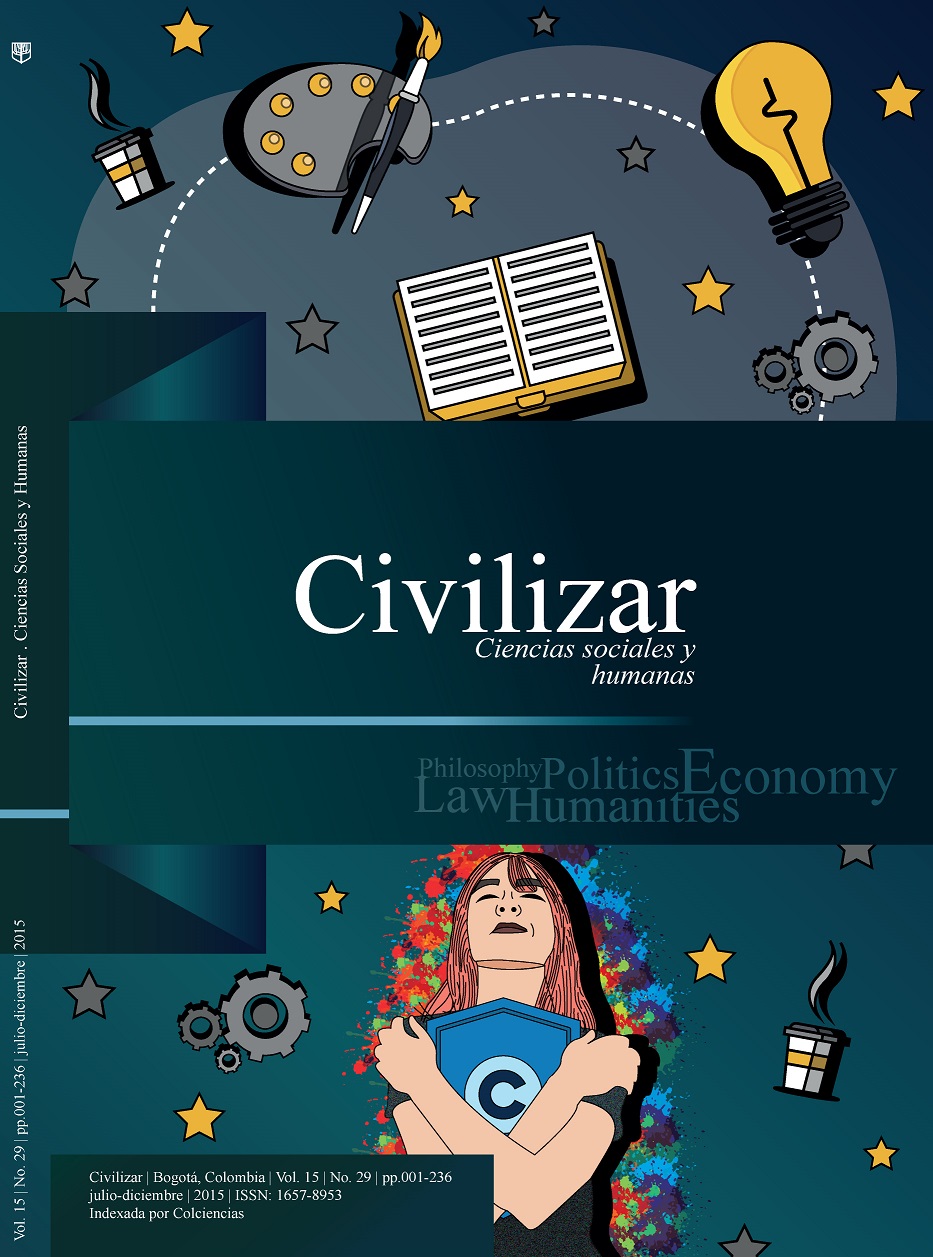Abstract
Trademarks, as a patrimonial asset and real property right, can be transferred or subject of conveyance as an expression of the autonomy of the will and the free disposition of its owner. However, Article 161 of Decision 486 by the Andean Community establishes a series of requirements and considerations that must be observed by those interested in carrying out this act and by the office in charge of industrial property public registration, specifically, ensuring that the risk of confusion among consumers is mitigated. Therefore, this article presents an approach to the way in which this situation should be analyzed in the field of transactional operations of brands that belong to companies that, in turn, make up a business group.
This article conducts a literature review of the trademark portfolio management led by business groups, in terms of the transfer of the records belonging to one of the companies that make part of a given group and other business societies, in view of the requirements and considerations established by Article 161 of Decision 486 by the Andean Community, which are aimed at mitigating the risk of confusion among consumers derived from such transfers. To this end, we provide a description of common practices by different industrial property offices in the Andean Community area and the Colombian Superintendence of Industry and Commerce in its role of administrating the public registry of industrial property.
References
Castro García, J. D. (2009). La propiedad industrial. Universidad Externado de Colombia.
Cerra, E. P. (2017). De la autonomía de la voluntad: noción, limitaciones y vigencia. Advocatus, 14(29), 179-190. https://doi.org/10.18041/0124-0102/advocatus.29.1661
Consejo de Estado, Sala de lo Contencioso Administrativo. (2011, 2 de junio). Expediente 11001-03-24-000-2007-0018700. C. P. Marco Antonio Velilla Moreno.
Córdoba Acosta, P. A. (2006). Derecho de sociedades, derecho común y responsabilidad de la sociedad holding: levantamiento del velo corporativo, responsabilidad contractual y aquiliana. Revista de Derecho Privado, 10, 51-102. https://revistas.uexternado.edu.co/index.php/derpri/article/view/584
Decisión 486: Régimen Común sobre Propiedad Industrial (Comisión de la Comunidad Andina) (2000, 14 de septiembre). https://www.wipo.int/edocs/lexdocs/laws/es/can/can012es.pdf
Delgado Peña, P. A. (2020). Acto de confusión generado de competencia desleal: análisis desde el derecho sustancial. Revista CES Derecho, 11(1), 117-133. https://doi.org/10.21615/cesder.11.1.6
Flórez Acero, G. D. y Paca, J. C. (2021). Protección marcaria en el sistema jurídico colombiano. En G. D. Flórez Acero, Propiedad intelectual. Derechos de autor y derecho marcario en las industrias creativas (pp. 97-110). Legis.
Guerrero, M. (2009). Tipología de los contratos de transferencia de tecnología. Revista La Propiedad Inmaterial, 13, 199-252. https://revistas.uexternado.edu.co/index.php/propin/article/view/461
Ley 222. Congreso de Colombia (1995, 20 de diciembre). Por la cual se modifica el Libro II del Código de Comercio, se expide un nuevo régimen de procesos concursales y se dictan otras disposiciones. Diario Oficial No. 42.156. http://www.secretariasenado.gov.co/senado/basedoc/ley_0222_1995.html
Ley 22.362. Presidencia de la Nación Argentina. (1980, 26 de diciembre). Ley de Marcas y Designaciones.
Ley 9.279. Presidencia de la República de Brasil. (1996, 14 de mayo). Regula derechos y obligaciones relativos a la propiedad industrial. https://www.gov.br/inpi/es/servicios/marcas/archivos/lpiespanhol.pdf
Ley 17011. Legislación Nacional – Uruguay. (1998, 7 de octubre). Ley de Marcas. https://www.impo.com.uy/bases/leyes/17011-1998
Montiel Fuentes, C. M. (2009). Acercamiento al concepto de grupos empresariales: concurrencia de elementos para su existencia. Revista e-Mercatoria, 8(1). https://revistas.uexternado.edu.co/index.php/emerca/article/view/2038
Scognamiglio, R (1996). Teoría general del contrato (F. Hinestrosa, trad.). Universidad Externando de Colombia
Schmitz Vaccaro, C. (2012). Distintividad y uso de las marcas comerciales. Revista Chilena de Derecho, 39(1), 9-31. https://doi.org/10.4067/S0718-34372012000100002
Superintendencia de Sociedades. (2010). Guía Práctica Régimen de Matrices y Subordinadas. https://www.supersociedades.gov.co/boletines-conceptos-juridicos/-/asset_publisher/atwl/content/gu%25C3%25ADa-pr%25C3%25A1ctica-r%25C3%25A9gimen-de-matrices-y-subordinadas
Tello Cabello, S. Y. (2011). El examen de confundibilidad marcaria en la Decisión 486 y su norma complementaria Decreto Legislativo 1075. LEX, 9(8), 378-408. https://doi.org/10.21503/lex.v9i8.417
Tribunal de Justicia de la Comunidad Andina. (2002, 4 de diciembre). Proceso 82-IP-2002. https://www.comunidadandina.org/DocOficialesFiles/Gacetas/Gace891.pdf
Tribunal de Justicia de la Comunidad Andina. (2004, 1 de septiembre). Proceso 85-IP-2004. https://www.comunidadandina.org/DocOficialesFiles/Gacetas/Gace1124.pdf
Tribunal de Justicia de la Comunidad Andina. (2010, 20 de julio). Proceso 74-IP-2010. https://www.comunidadandina.org/DocOficialesFiles/Gacetas/Gace1880.pdf
Waked Castell, R. (2018). Nociones de los grupos empresariales por sus alcances en la ley colombiana. [Trabajo de grado, Universidad Católica de Colombia]. Bogotá. https://hdl.handle.net/10983/20410

This work is licensed under a Creative Commons Attribution-NonCommercial-NoDerivatives 4.0 International License.
Copyright (c) 2022 Journal Civilizar: Social and Human Sciences

